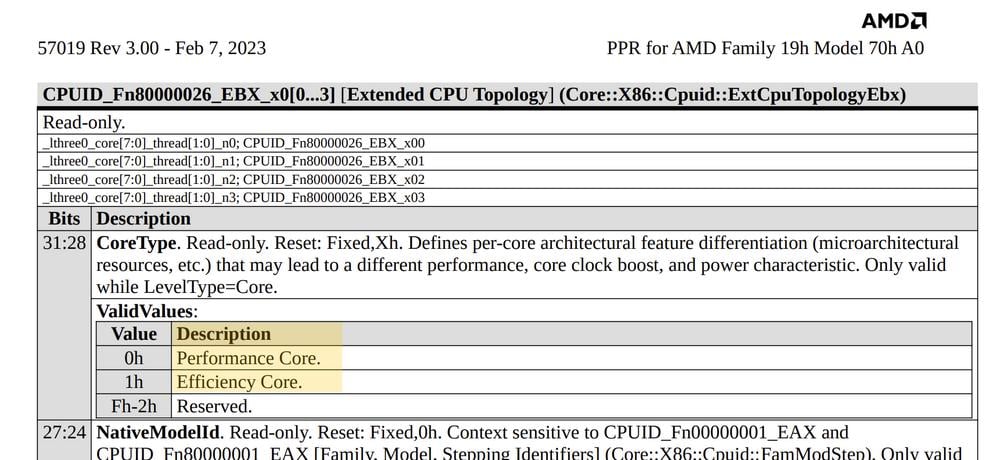New documents have been pictured showing AMD’s Phoenix APUs featuring a hybrid core design.
Following in the footsteps of Intel’s Alder Lake and Raptor Lake CPUs, the leak suggests AMD will be moving towards Performance (P) and Efficiency (E) cores, at least when it comes to its upcoming Phoenix APUs. Conjecturing somewhat, the red team will most likely use standard Zen 4 plus energy-efficient Zen 4c cores.
The P- and E-cores may have different instruction sets, with the E variant including only what’s necessary to lower complexity and thus energy consumption. Meanwhile E-cores will probably be offered in greater numbers, but at lower clock speeds compared to their P counterparts. This should allow battery-powered machines to consume less on background or light tasks all while producing less heat.
Aside from the potential efficiency gains, a hybrid approach could also allow AMD to compete with Intel in terms of sheer core count.

According to older rumours, Phoenix 1 was to have eight Zen 4 cores with 16MB of L3 cache alongside six RDNA 3 clusters at 15 to 35W power targets, with Phoenix 2 switching to 2 P-cores plus 4-E-cores carrying 4+4MB of L3 cache and two RDNA 3 clusters at 15 to 28W, adding that Zen 4c clock is similar to Zen 2.
No matter the final shape of these APUs, what is sure is that the hybrid core layout has many benefits be it for laptops or desktops; we just need the operating systems to become more intelligent in splitting workloads.

